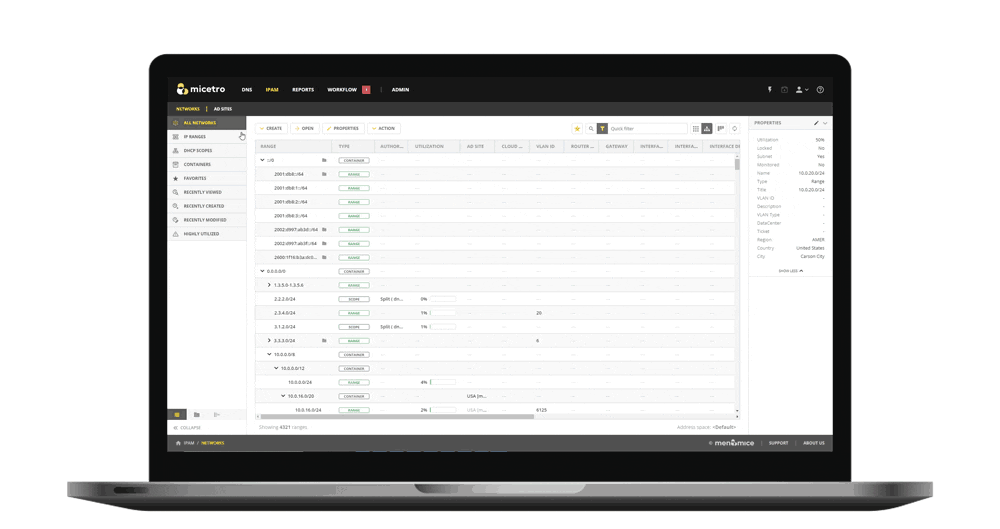What is DDI?
DDI is the acronym for DNS, DHCP, and IP Address Management,
The three core components of networking are usually managed together:
- DNS (Domain Name System) is a system for translating human readable domain names into numerical IP addresses.
- DHCP (Dynamic Host Configuration Protocol) automates the process of assigning IP addresses to devices. It is crucial for the mobility we enjoy as connected devices move seamlessly between networks.
- IPAM (IP address management) refers to the planning, tracking and managing IP addresses and the devices that use them within an organization.
Although DDI is a discipline often treated as one, DNS, DHCP, and IPAM can and do work independently. It depends on your environment and operational needs if one takes priority or gets phased out completely.
What are the core benefits of DDI?
The synergy that can exist between the different parts of DDI is what makes unified solutions work better. DDI can enrich each of its parts with data from the others. There are also inherent risks involved in managing the three components separately. With a centralized solution, network administrators gain complete control of the network, ensuring its error-free, uninterrupted operations.
Does my company need DDI?
Although your company may not need all three functionalities, but even those that don’t utilize DNS, DHCP, and IPAM to equal measure can benefit from the added value of a DDI solution and unified management methodology.
In today’s hyper-connected and increasingly integrated world, businesses that prioritize this practice and capitalize on the overall value of a holistic solution like a unified DDI software can gain a competitive advantage.
What is the added value of DDI solutions to the enterprise?
DDI solutions help enterprises manage their core network services easily, securely and sustainably. A few of the benefits of a DDI solution like Micetro by Men&Mice include:
- Seamlessly integrated cross-discipline functionality
- Management of the entire DNS, DHCP and IPAM in an accessible, browser-based interface
- Single pane of glass view of the network and DDI data
- Simplified DDI management through identifying unused resources, deployment automation
- Increased visibility and cost savings
- Modern automation, secure redundancy, and multicloud migration
- Live scope migration, active lease recovery, and failover support
- Enriched visibility, filtering, and high-frequency reporting
- Seamless, non-disruptive deployment and platform-agnostic automation through REST, SOAP, and JSON-RPC.
